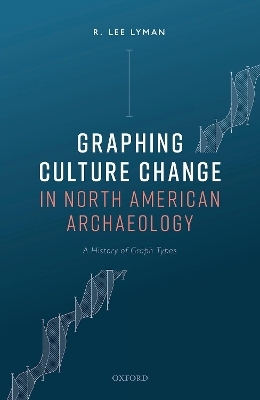
Graphing Culture Change in North American Archaeology
Oxford University Press (Verlag)
978-0-19-887115-6 (ISBN)
Documentation, analysis, and explanation of culture change have long been goals of archaeology. Scientific graphs facilitate the visual thinking that allow archaeologists to determine the relationship between variables, and, if well designed, comprehend the processes implied by the relationship. Different graph types suggest different ontologies and theories of change, and particular techniques of parsing temporally continuous morphological variation of artefacts into types influence graph form.
North American archaeologists have grappled with finding a graph that effectively and efficiently displays culture change over time. Line graphs, bar graphs, and numerous one-off graph types were used between 1910 and 1950, after which spindle graphs displaying temporal frequency distributions of specimens within each of multiple artefact types emerged as the most readily deciphered diagram.
The variety of graph types used over the twentieth century indicate archaeologists often mixed elements of both Darwinian variational evolutionary change and Midas-touch like transformational change. Today, there is minimal discussion of graph theory or graph grammar in introductory archaeology textbooks or advanced texts, and elements of the two theories of evolution are still mixed. Culture has changed, and archaeology provides unique access to the totality of humankind's cultural past. It is therefore crucial that graph theory, construction, and decipherment are revived in archaeological discussion.
R. Lee Lyman is Emeritus Professor of anthropology at the University of Missouri-Columbia. He studies the late Quaternary paleomammology and human prehistory of the Pacific Northwest United States, and the history of North American archaeology and paleozoology. He is the author of Quantitative Paleozoology (2008) and Theodore E. White and the Development of Zooarchaeology in North America (2016), co-author of Paleozoology and Paleoenvironments (2019), and co-editor of Conservation Biology and Applied Zooarchaeology (2012).
Introduction
1: Culture Chronology And Change
2: An Evaluative Framework
3: Materials and Methods
4: Early History of Archaeology Graphs
5: Paleontological, Palynological, Biological, and Physical Anthropology Graphs
6: Archaeology Spindle Graphs in the 1930s
7: Shopping Around and One-Off Graphs
8: The Fourth (and Influential) Introduction of Spindle Graphs
9: Observations on Graphing Prehistory
10: Final Thoughts
Appendix 1. Archaeology Literature
Appendix 2. Paleontology Literature
Appendix 3. Anthropology Textbooks
Appendix 4. Introductory Archaeology Textbooks
Appendix 5. European Archaeology Literature
| Erscheinungsdatum | 16.08.2021 |
|---|---|
| Verlagsort | Oxford |
| Sprache | englisch |
| Maße | 162 x 242 mm |
| Gewicht | 794 g |
| Themenwelt | Geisteswissenschaften ► Archäologie |
| Geschichte ► Teilgebiete der Geschichte ► Kulturgeschichte | |
| ISBN-10 | 0-19-887115-5 / 0198871155 |
| ISBN-13 | 978-0-19-887115-6 / 9780198871156 |
| Zustand | Neuware |
| Informationen gemäß Produktsicherheitsverordnung (GPSR) | |
| Haben Sie eine Frage zum Produkt? |
aus dem Bereich


